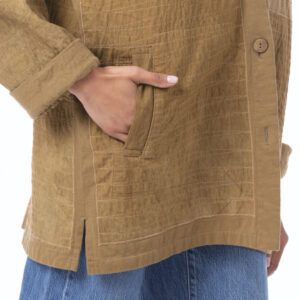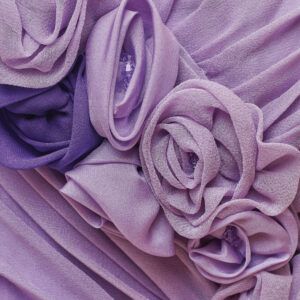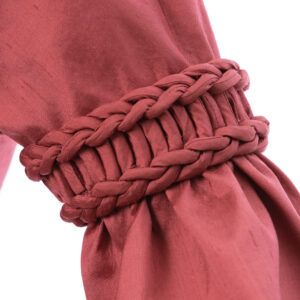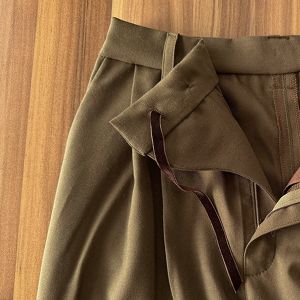*
Is there an easy way of achieving a neat “angle” in seam construction?
By this I mean –
part of the pattern piece is shaped “L” and you must reinforce the angle and cut to your reinforced stitching. This piece is then joined to another piece which is usually a mirror image of the reinforced angle. By sewing them together and swivelling at the reinforced stitching you create an angled seam. (I don’t know the proper name for this construction).
Any ideas on creating a clean angle?



























Replies
*
I do a couple of different things, depending. If it is going to be edgestitched, I simply press the upper piece precisely on the stitching lines to fold under, lay it on top, and edgestitch it down. If it is not going to be edgestitched, I always staystitch on the stitching line with tiny stitches on both pieces. Then I cut at an angle down almost to that line on the piece that receives the inserted piece. On the insertion piece, I fold on the stitching lines diagonally, and trim away a slight wedge from the corner. Then I pin and stitch, with the insertion piece on top, and exactly on the staystitching, down one side up to the corner, making tiny stitches at the corner. Then, I turn the piece, fold the insertion piece out of the way, and stitch down the other side. If you are careful, and don't backstitch, it will be perfect!
*Sounds like you are describing a set-in seam, often found at the back neck of a shawl collar or the underarm of a square-set sleeve. In my experience, choice of fabric can make a difference. Fabrics that are loosely woven, very crisp or thin/flat are less forgiving than fabrics with some "plush" in their weave, such as lightweight wools or crepes. I agree that short staystitching is a must and also recommend that the pivot point be accurately marked. I sometimes sew each side of the L separately, starting at the pivot point each time.
*Some of the Sewing Workshop patterns describe inset corners done by sewing a small piece of lining fabric with the staystitching of the inside corner. This is stitched to the right side and then pressed to the wrong side. The edges of this lining give you something to hang on to as you sew and press to get a clean corner. Hard to describe! I think this in Vouge Designer Sewing Techniques.
This post is archived.